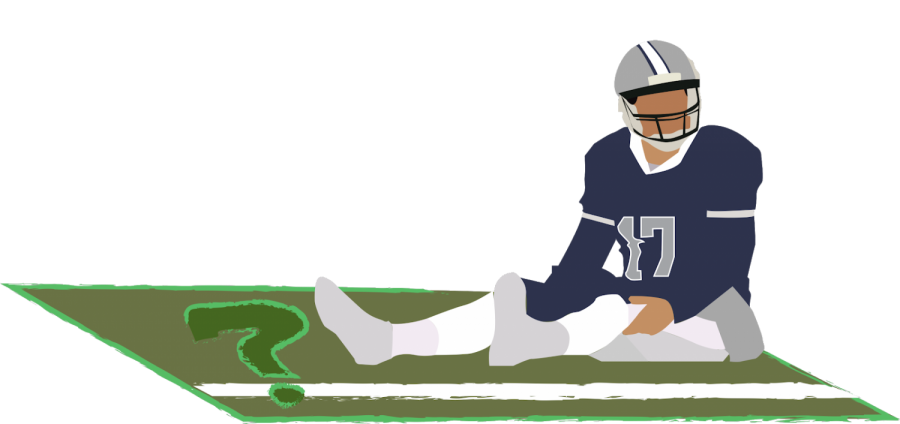By Carolyn Gray ’19
During the season, the Staples football team spends their time after school strapping on their helmets, putting on their pads and practicing on their home turf for the next big game. The football team practices an average of six times per week, and yet these athletes may not know that while they practice tackling their opponents, they could also be increasing risks to their health.
The tiny black pellets––or, more accurately, tire crumbs––on the turf field may not seem like a match for a football player. However, studies have shown that turf fields can increase all kinds of health-related risks in athletes, including concussions and perhaps even cancer. With so many other health risks for high school athletes to consider, they should not have to worry about the hazards of playing on synthetic turf fields.
Speaking of risks, concussions have long been a popular topic in football news. However, I am sure that most people following the buzz about the concussion epidemic have heard very little or nothing at all about how turf fields may be weighing in on the issue.
According to a study from NBIC, concussions are more likely to occur on turf fields compared to natural grass fields because turf fields have the least “impact attenuation” of any field tested. In other words, turf fields are a harder surface than grass and don’t absorb as much of the impact of a hit. Therefore, the athlete would be more likely to face an injury as a result of falling on a turf field in comparison to a grass field.
In the last few years, it seems that everyone involved with football, from parents to coaches to the National Football League (NFL) has been in favor of taking action to minimize head injuries. For example, the NFL has instituted a new helmet rule. Yet, from what I have researched, no effort has been put forth to change turf fields to grass.
Also, I feel obliged to bring up that eerie word “cancer,” as more studies have linked it to athletes who play on turf fields. For over a decade, the news has followed stories about athletes diagnosed with cancer after years of playing on turf fields.
A 2017 CNN article follows the story of Jean Bryant, a mother of three boys, one of which was diagnosed with cancer at the age of 14. Bryant’s son was a soccer goalie. After Bryant heard from her friend, Amy Griffin, an assistant head coach of women’s soccer at the University of Washington, that many of her players were getting cancer, it became apparent to her that there must be a link between cancer and turf fields.
Bryant was able to make her theory more plausible after researching that the tire crumbs on turf fields are made up of chemicals that can be harmful with high exposure to athletes. While no study so far has definitively concluded that tire crumbs cause cancer, it is highly hazardous and unhealthy for students to play on turf fields just from what studies show now.
Until there is evidence found to conclude that turf fields are not cancer-causing, students should not risk playing on turf fields.
I understand that many people will argue that athletes know their risks when they get involved in a sport. I also know that turf fields can be easier to maintain, more cost effective and a better investment for schools. But the relative safety of players should not be dictated by money or maintenance.
This is especially true when athletes are being diagnosed with concussions and even cancer, causing parents to spend thousands of dollars on treatments. This is a safety issue that the Westport School District needs to be proactive about.
All I ask is that the district, as well as other school districts across the United States, think about the ways that turf fields may be risking athletes safety, especially as more and more schools are continuing to use them.














































